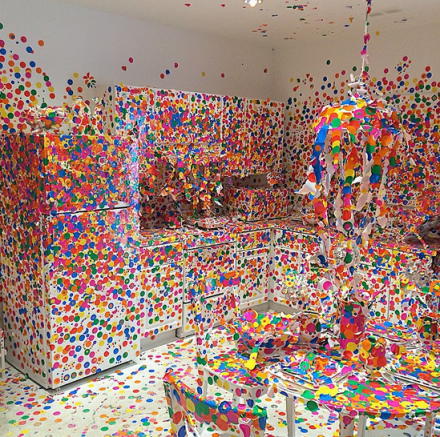
Yayoi Kusama, Obliteration Room (2002 – present), via Art Observed
Yayoi Kusama returns to New York City this summer at David Zwirner, bringing a new body of paintings, sculptures, and one of her popular, full-room installation pieces, all of which offers a nuanced look at the 86 year-old artist’s prolific output.
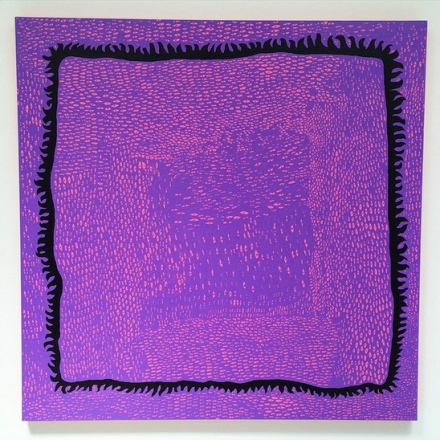
Yayoi Kusama, My Life (2014), via Art Observed
Kusama’s new works are a striking continuation of her vividly imaginative recent practice: immense, brightly colored canvases that explode with energy, often delving into peculiar constructions of the human face, or even using the face itself as a compositional element in larger, patterned works. Kusama’s canvases here imply a take on the human form, yet reduced down to colorful elements and pieces, disseminate through Kusama’s own brand of pointillist expressionism. Other works on view take simpler trajectories through the artist’s well-established techniques. Patterns often repeat and reappear throughout, rendering works that play on both symmetry and freehand expression, allowing compositions to develop not only as a result of the artist’s formal leanings, but also as a series of relations from one work to the next. In one particularly impressive, minimal piece, the artist covers a purple background with small, pink marks resembling eyes, allowing a gradual repetition of a single element to express itself across the canvas, eventually taking it over.
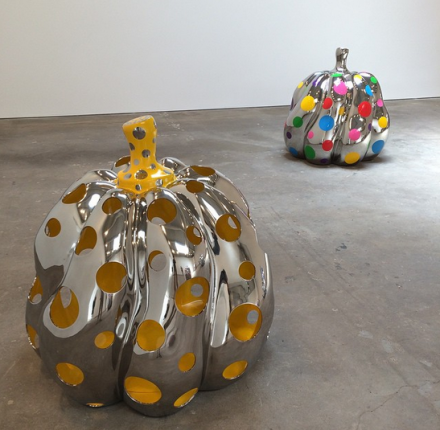
Yayoi Kusama, Give Me Love (Installation View), via Art Observed
Perhaps this notion is nowhere more readily apparent than Kusama’s new iteration of her Obliteration Room, a long-running sculptural installation in which visitors are invited to cover a stark, all-white domestic space with colorful polka dots, eventually filling the entire room with spots of color. The action, one which Kusama allows outside of her own hands, is perhaps the not clear demonstration of her long-running interest in the dot as an agent of the “void,” a small mark that, through its own proliferation, eventually destroys the space on which it is placed. Here, the spectacle of a room gradually disappearing beneath a mass of color makes this role for her dots explicit. At a certain point, the objects within the space are no longer identifiable, and the dimensions of her installation gradually lose ground to the sheer impact of color that floods throughout the one room home.
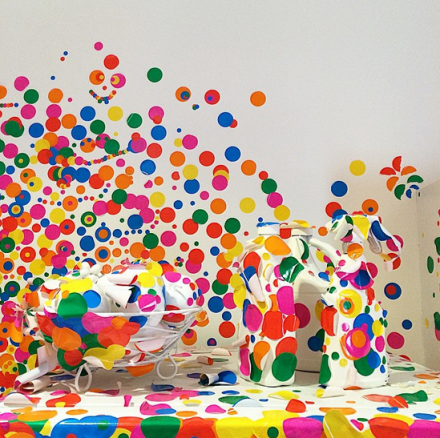
Yayoi Kusama, Obliteration Room (detail) (2002 – present), via Art Observed
Kusama’s work is a compelling exercise in theme and variation, as different series work in tandem, offering insight into the artist’s aesthetic project and her tumultuous personal history with each respective piece. Here, the artist’s fascination with the polka dot, as frequently expressed in interviews as well as in her own personal writings and video works, serves as a backdrop for her immense painterly output. Even as the artist continues to cover the canvases herself, each painting serves as a flash of color in its own right, its variation blotting out the artist from view, one piece at a time.
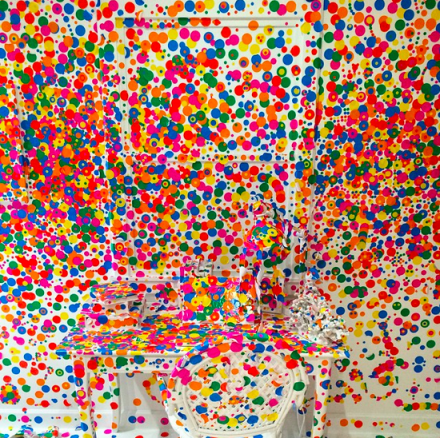
Yayoi Kusama, Obliteration Room (detail) (2002 – present), via Art Observed
— D. Creahan
Read more:
Yayoi Kusama at David Zwirner [Exhibition Site]



